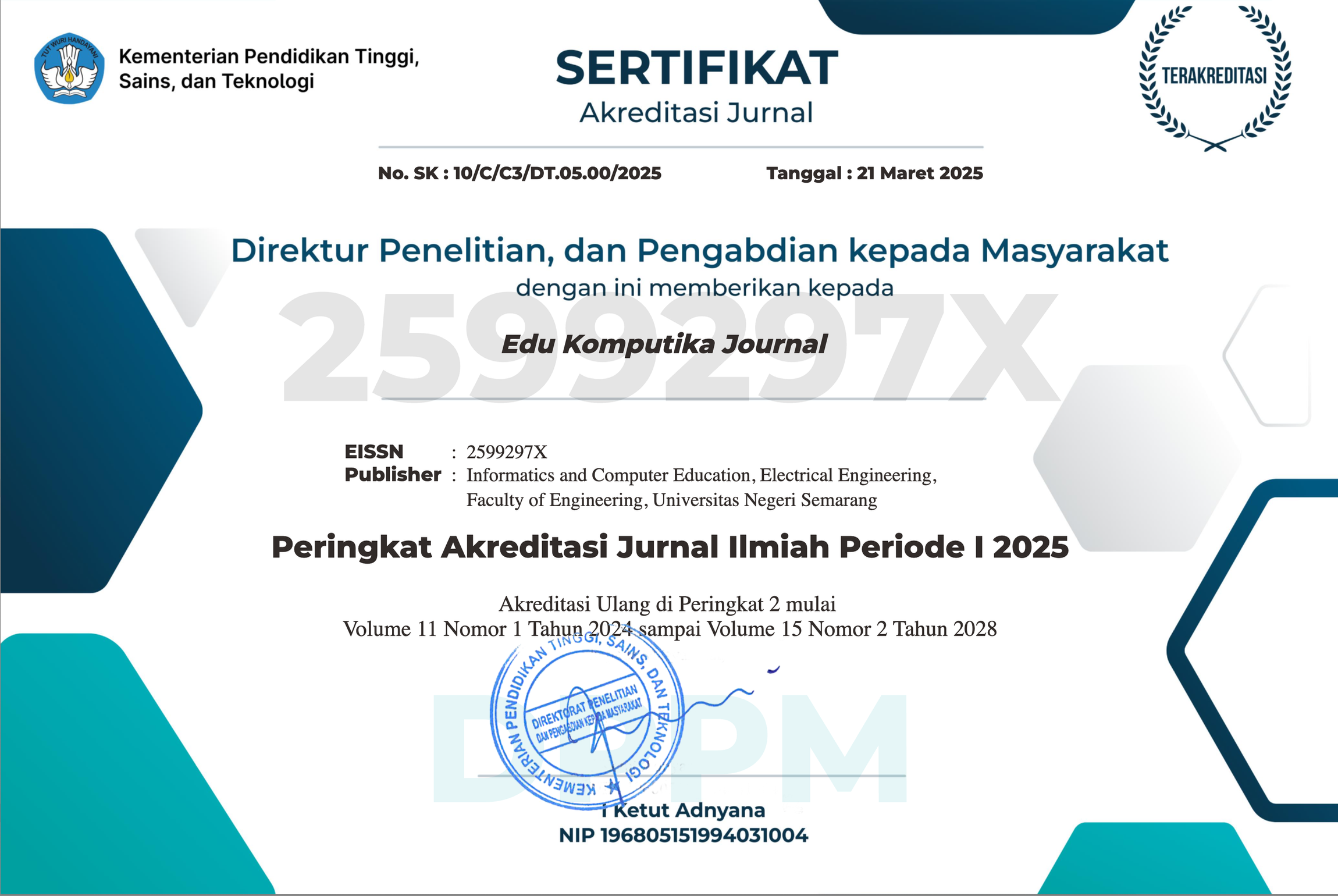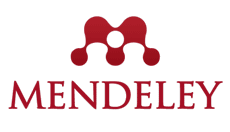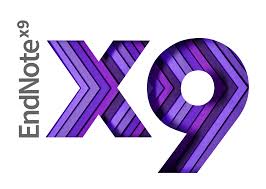Development of Learning Media for Hydroponic Systems Based on the Internet of Things
DOI:
https://doi.org/10.15294/edukom.v11i1.10912Keywords:
Hydroponics, Internet of Things, Learning MediaAbstract
Advances in information and communication technology have changed the paradigm in the agricultural sector, especially in the application of the Internet of Things (IoT). An IoT-based monitoring system is an innovative step as there is an increasing need for technology in the agricultural sector and the development of the world of education. SMK Negeri 3 Salatiga, majoring in agribusiness, has great potential in hydroponic agriculture of lettuce plants, but there is no use of IoT technology in it. Hydroponic learning activities at SMK Negeri 3 Salatiga still use manual hydroponic learning media, which results in the competence possessed by teachers and students not being competent in IoT technology, especially its application to hydroponics. Meanwhile, if adjusted to learning outcomes, students should be able to fertilize plants in a modern way. The purpose of this study is to develop and implement hydroponic monitoring learning media based on Internet of Things technology. The application of learning media aims to improve the understanding or competence of teachers and students at SMK Negeri 3 Salatiga. The research methods used are Research and Development with the ADDIE development model, as well as one group pre-test and post-test design research design with 31 samples as a competency improvement test. This study resulted in 26 participants out of 31 participants experiencing an increase in competency in the results of the post-exam exam. So, it can be concluded that there is an increase in the competence of using hydroponic IoT by 83% among teachers and students.
References
Andrianto, H., & Suryaningsih, S. (2023). Monitoring and Control of Nutrients in Hydroponic Plants IoT-based Wick System. ELKOMIKA: Journal of Electrical Energy Engineering, Telecommunication Engineering, & Electronics Engineering, 11(4), 968. https://doi.org/10.26760/elkomika.v11i4.968
Atin, S., Maulana, H., Afrianto, I., Hirawan, D., Dwi Agustia, R., Finandhita, A., & Dwiguna Saputra, I. (2023). Training and Application of IoT Smart Farming Hydroponics to Support Craft and Entrepreneurship Subjects (PKWU) at SMAN 1 Majalaya. Dynamisia: Journal of Community Service, 7(2), 342–353. https://doi.org/10.31849/dinamisia.v7i2.12570
Danuri, M. (2019). Development and transformation of digital technology. Infokam, XV(II), 116–123.
Darmanto, T., & Krisma, H. (2019). Implementation of IoT Technology for Android-Based Household Electronic Equipment Control. Journal of Informatics Engineering of St. Thomas University (JTIUST), 04(1), 1–12.
Darmawan, I. W. B., Kumara, I. N. S., & Khrisne, D. C. (2022). Smart Garden as an implementation of a smart technology-based plant control and monitoring system. SPECTRUM Journal, 8(4), 161. https://doi.org/10.24843/spektrum.2021.v08.i04.p19
Dhamayanti, R. A. (2023). The development strategy of the agricultural sector faces changes in the economic structure in Semarang Regency. Semarang Regency Research Information Media, 5(1), 437–449.
Fauzan, A., & Fahlefie, R. (2022). Arduino Uno Based Hydroponic Monitoring System. Scientific Journal of Control and Electrical Students, 3(1), pages. https://doi.org/10.33365/jimel.v1i1
Gude, D., Elektro, J. T., Moses, W., & Abdussamad, S. (2024). Design and Build a Hydroponic Water pH Control and Monitoring System Using the Blynk Application. Jambura Journal of Electrical and Electronics Engineering (JJEEE), 6(1), 57.
Kurniawan, P., Hikmatyar, M., & Hartono, R. (2023). Arduino-Based Water and Lettuce Vegetable Nutrition Ph Control Tool with Nutrient Film Technique System. Journal of Technology, 13(2).
Meriaty, Arvita, S., & Dwi, P. K. (2021). Growth and Yield of Lettuce Plants (Lactuca sativa L.) Due to the Type of Hydroponic Planting Media and AB Mix Nutrient Concentration. Journal of Agroprimatech, 4(2), 75–84.
Ramu, H., & Soh, M. J. C. (2024). Automated Smart Garden using IoT System. Evolution in Electrical and Electronic Engineering, 5(1), 213-220. https://doi.org/10.30880/eeee.2024.05.01.027
Saputra, R. (2023). Improving operational efficiency through the implementation of the latest technology in the production process. Journal of Creative Power and Ambition, 1(1), 13–26.
Setiawan, A., & Intan Vidyastari, R. (2023). Design of Broiler Chicken Feeding and Drinking Equipment Automatically Using Blynk Notifications. Digital Transformation Technology (Digitech) | e, 3(1). https://doi.org/10.47709/digitech.v3i1.2610
Sitorus, T. B. M., Kurniasih, N., & Sari, D. P. (2021). Prototype of Temperature, Humidity and Wind Speed Monitoring Equipment for Smart Farming Using LoRa Communication with Electrical Power Using Solar Panels. Lightning, 10(2), 370–380. https://doi.org/10.33322/kilat.v10i2.1376
Sugiyono. (2015). Quantitative, Qualitative And R&D Research Methods. Bandung: Alfabeta.








